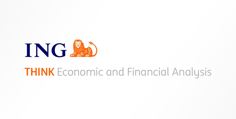Street Calls of the Week
Should Russia and Ukraine ultimately reach a peace deal, the US dollar is probably due another moderate correction – but for now, markets are lacking tangible bearish USD drivers and we think the dollar could keep rebounding today. In Australia, the RBA cut rates as expected, but the Australian Dollar is benefitting from a hawkish tone on future easing
USD: Fading Bearish Momentum
Our baseline view for this week has been that the dollar correction has run its course, and we still favor chasing a USD rebound against other G10 currencies. There is admittedly some residual room for a risk-on/dollar-off move once a potential Russia-Ukraine peace deal is agreed, but markets are largely pricing it in at this stage and there are no guarantees for now that it will allow to price out longer-run geopolitical risk.
Today, markets will remain focused on any developments on the US-Russia bilateral talks on Ukraine, but barring a major breakthrough, the optimistic push and relative upbeat risk sentiment may stall or fade in the next couple of days and the dollar can continue to recover some ground.
Also on the positioning side, there is some evidence that the dollar longs are slightly less stretched. CFTC USD positioning versus G10 currencies excluding SEK and NOK (which are not reported) has inched back lower to a seven-week low, albeit remaining above +20% of open interest.
Macro developments will likely play a secondary role this week, with the exception of tomorrow’s FOMC minutes. Today’s Empire Manufacturing index and TIC flows out of the US should have limited market impact.
EUR: No Help From Joint Defence Spending
The ongoing discussion among EU leaders for a joint fund for defense spending is unlikely to drive much support for European currencies. That’s because the trigger is US President Donald Trump’s threat to scale back military support for NATO borders in Europe, which is hardly a net-positive development for local currencies.
It is equally far-fetched to hope any such EU coordination on common spending will be replicated on the fiscal side to counter US protectionism. The eurozone’s structural unpreparedness to face the economic consequences of Trump’s tariffs continues to form the basis of our bearish EUR view. Market pricing on the European Central Bank is around -75bp for year-end, but we think four more cuts this year (to 1.75%) will be warranted.
EUR/USD has obliterated the negative risk premium related to US tariffs. Remember in mid-January that amounted to 3% of undervaluation, according to our short-term fair value model. It seems that the Ukraine-Russia peace negotiations have offset the tariff threat in FX. However, the latter likely have more tangible implications for the ECB, the economy, and by extension the euro, and we, therefore, favor a lower EUR/USD. Our forecast for the end of this quarter is 1.02.
AUD: A Hawkish Cut by the RBA
The Reserve Bank of Australia cut rates for the first time in four years this morning, matching consensus and market expectations. The 25bp reduction was accompanied by some rather hawkish remarks by Governor Michele Bullock, both in the statement and in the press conference.
Bullock seemed to focus on pushing back against the dovish repricing in the AUD curve, reiterating that the focus remains firmly on inflation risk. That approach is in contrast with those of other developed central banks (including the neighbouring Reserve Bank of New Zealand, which should cut 50bp this week) which have shifted towards growth concerns.
Markets are pricing just under two cuts in Australia by the end of 2025, while we have a slightly more dovish forecast with one cut per quarter (three in total). Bullock’s cautious tone on further easing has allowed AUD to counter the USD rebound this morning. That said, we doubt markets are ready to shift expectations to only one RBA cut this year, and AUD’s high exposure to the trade story and risk sentiment may quickly overcome any short-term benefits from the RBA’s tone today.
We still think a return to 0.62 in AUD/USD is warranted by the end of March, with further downside risks in the second and third quarters when US protectionism may intensify.
CEE: Ukrainian Story Remains the Main Driver for the Region
Today's calendar in the CEE region doesn't have much to offer and we will have to wait until later in the week for more interesting data prints. The prospect of a Ukraine deal may continue to be a major driver for markets with today's meeting of US and Russian reps in Saudi Arabia. In Hungary, the annual conference of the ruling Fidesz party begins today, where we could potentially hear fiscal plans for this year and next before the general election.
The US market was closed yesterday, and CEE was rather muted at the start of the week, with FX essentially unchanged. However, rates – after an initial move higher following higher EUR rates – ended slightly lower in the Czech Republic and saw a drop in Hungary. Here is an obvious bias market for CEE to be received, likely coming from the Ukraine story. However, as we discussed here yesterday, the result is a tighter rate differential – which should stop the current FX rally later, or even push for some weakness once the positive sentiment fades.
Disclaimer: This publication has been prepared by ING solely for information purposes irrespective of a particular user's means, financial situation or investment objectives. The information does not constitute investment recommendation, and nor is it investment, legal or tax advice or an offer or solicitation to purchase or sell any financial instrument. Read more
